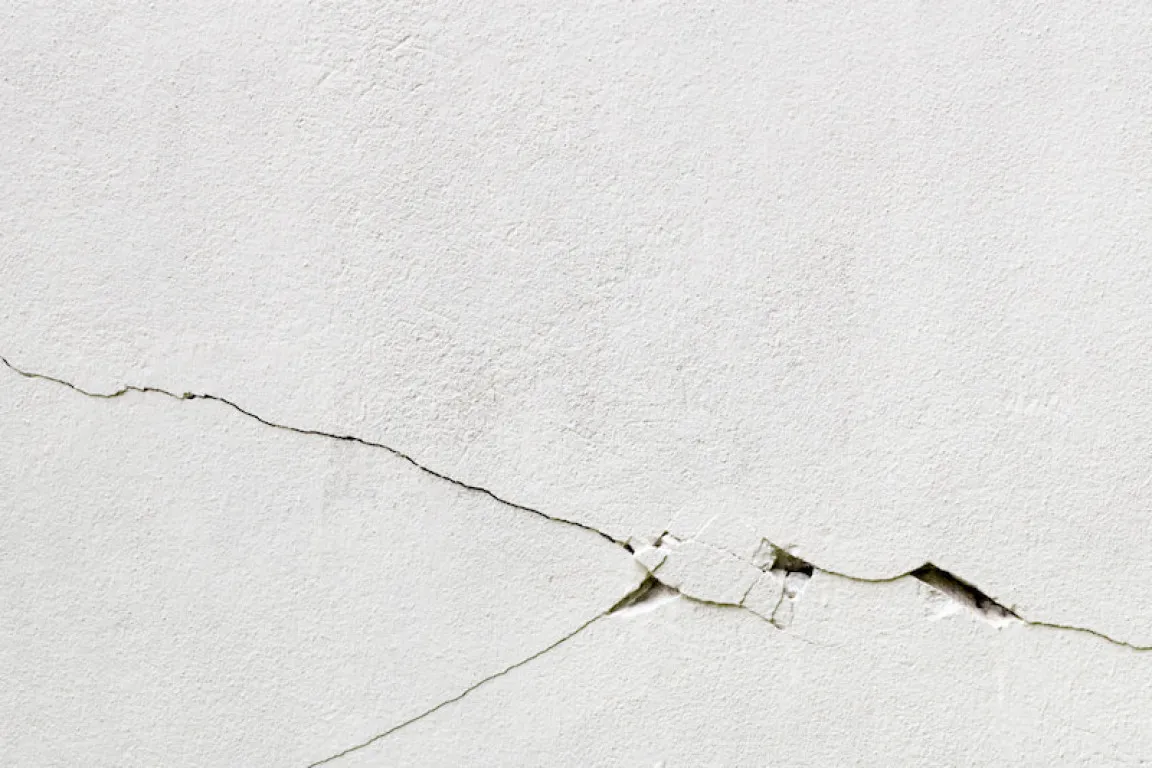Have you ever found cracks in your house walls? At first glance, it may seem like a trivial issue, but the causes of wall cracks, whether hairline or penetrating cracks, can indicate problems that need immediate attention.
Various factors cause wall cracks, ranging from the age of the building and poor building material quality to natural disasters. If not fixed promptly, these cracks can become larger. Therefore, to understand the causes and how to properly fix wall cracks, let's read this article in full!
Causes of Wall Cracks
Wall cracks often become a troublesome problem for homeowners. Not only does it affect the home aesthetics, but cracks can also indicate structural problems. Therefore, let's identify various factors that cause wall cracks.
1. Building Age
The age of a building often causes wall cracks. You can find lots of cracks, especially in old houses. Factors such as weather, extreme temperature changes, and structural pressure can accelerate the aging of materials, especially concrete and bricks. This then reduces the strength and stability of the foundation.
Cracks in old walls indicate that the building needs further attention. If the cracks become wider, especially in important structural parts, you need to immediately carry out repairs to prevent further damage.
2. Natural Disasters
Natural disasters, such as floods and earthquakes, can also cause wall cracks. Floods that inundate the house for a long time can weaken the wall structure due to water seeping in and causing the material to deteriorate.
Moreover, earthquakes can damage walls with their strong vibrations. Although there is earthquake-resistant technology, not all houses can use this technology due to its high cost.
3. Non-Strategic Location
A non-strategic house location can also cause hairline wall cracks. For instance, houses in highlands or near humid beaches are prone to wall strength degradation. Additionally, houses on sloping lands with unstable soil types can trigger wall cracks due to uneven building loads.
Read also: The Right Way to Apply Cement Plaster on Walls
4. Leaks and Dampness
Water leaks and excessive dampness in house walls can cause penetrating wall cracks. Water seeping into the walls can cause construction materials to expand and contract. This creates pressure and triggers wall cracks.
Furthermore, high humidity allows mold growth, which can damage the wall structure and weaken building materials.
5. House Ground Subsidence
Another cause of wall cracks is the subsidence of the ground around the house. Changes in soil structure and groundwater level decrease can cause foundation shifts affecting the stability and balance of the walls.
Therefore, regular monitoring of the soil condition and topography around the house can help detect the risk of ground subsidence.
6. Renovations
Careless renovations can also cause wall cracks. Structural changes, such as wall removal, load additions, or new designs, can cause shifts that damage the walls. Before renovating, it's best to consult a structural expert or civil engineer to ensure changes don't harm the wall and foundation stability.
7. Low-Quality Materials
Using low-quality materials can also cause wall cracks. Poor material mixtures will result in easily cracked and fragile walls. Therefore, use the best quality cement when building or renovating a house to ensure the durability and stability of the walls.
8. Excessive Building Load
Paying attention to building load is very important, especially for two-story houses. Miscalculations often cause the first-floor walls to bear loads exceeding their capacity, triggering cracks.
Read also: Understanding the Importance of Concrete Structure Maintenance
Signs of Wall Cracks
Wall cracks are not always clearly visible. However, there are some signs you can identify for early detection of potential wall cracks. The signs of wall cracks include:
- Surface finishing changes: Cracks cause paint to peel or plaster to flake off, indicating pressure or movement beneath the wall surface.
- Cracking or vibrating sounds: Cracking or vibrating sounds when pressing or tapping the wall indicate cracks or structural damage.
- Cracks crossing corners: Cracks crossing or intersecting wall corners indicate significant structural instability that needs immediate attention.
- Crack size: Cracks can vary from narrow, like hairlines, to wide and conspicuous. Wide cracks indicate serious structural damage.
- Line-shaped cracks: Straight or winding cracks indicate pressure or shifts within the building structure.
How to Fix Wall Cracks
There are several ways to fix wall cracks, from simple solutions for small cracks to repair steps for large cracks. Here are some steps to fix wall cracks at home that you can try.
1. Use Wall Plaster
The first way to fix wall cracks is by using wall plaster to address cracks or uneven wall surfaces. Before starting, make sure to clean the area to be plastered. Then, apply wall plaster with a trowel or spatula. Smooth the surface carefully and let the plaster dry completely before painting or covering the wall.
2. Apply Putty Paint
The next step to fix wall cracks is by applying putty paint to conceal cracks and imperfections on the wall. First, clean the crack area, then apply the putty paint with a brush or roller to smooth and conceal the crack. Let the putty paint dry before continuing with wall painting.
3. Use a Mixture of Cement and Sand
Cement and sand can help cover large cracks in walls. Use a cement and sand mixture with a 5:1 ratio to ensure the crack is well covered. Here are the application steps:
- Smooth the wall surface to remove dust.
- Make the cement and sand mixture.
- Apply the mixture to the crack until it is tightly covered.
- Let it dry.
- After drying, cover with putty paint and house paint.
4. Using Wall Filler
The last step to fix wall cracks is to use a wall filler to fill small cracks or holes in walls. To use this material, first clean the crack area from dust and dirt.
Then, apply wall filler with a spatula or trowel. Smooth the surface and let it dry. After that, continue with sanding and painting the wall.
This comprehensive guide explains the causes of wall cracks and how to effectively repair them. Regular inspections of your home's walls are crucial for identifying and addressing emerging cracks early to prevent further damage.
For larger cracks, using a mixture of cement and sand may be necessary for a thorough repair. Semen Merah Putih offers a range of high-quality cement products, including Portland Composite Cement (PCC), designed to provide a reliable solution to prevent these issues.
Portland Composite Cement (PCC) from Semen Merah Putih is manufactured with environmentally friendly technology and rigorous quality control, ensuring long-lasting durability and strength for your construction needs. It is also easy to apply, resulting in smooth, even surfaces that simplify your wall renovation projects.
Contact Semen Merah Putih today for top-quality cement solutions and expert advice!
Read also: 5 Tips for Long-lasting Cement Walls



